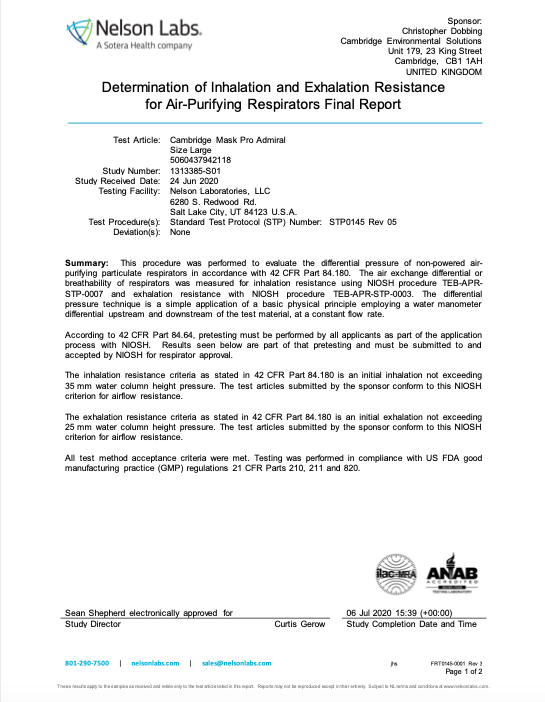Understanding Inhalation and Exhalation Resistance in Masks
What is Inhalation and Exhalation Resistance?
Inhalation and exhalation resistance indicate how difficult it is to breathe in and out while wearing a mask. A comfortable mask will have low resistance for both inhalation and exhalation. This resistance is measured by calculating the differential pressure (Delta P), which compares the pressure on either side of the mask.
How is Delta P Measured?
Delta P is measured using a manometer, a U-shaped tube filled with liquid (water, in this case). The movement of the liquid up or down one side of the tube indicates the resistance, measured in millimeters of water (mm H2O).
What are the FDA Requirements?
The FDA stipulates that inhalation resistance must not exceed 35 mm H2O and exhalation resistance must not exceed 25 mm H2O. Our PRO mask significantly surpasses these standards, with an average inhalation resistance of 8.5 mm H2O and an average exhalation resistance of 5.47 mm H2O, ensuring both safety and comfort.

